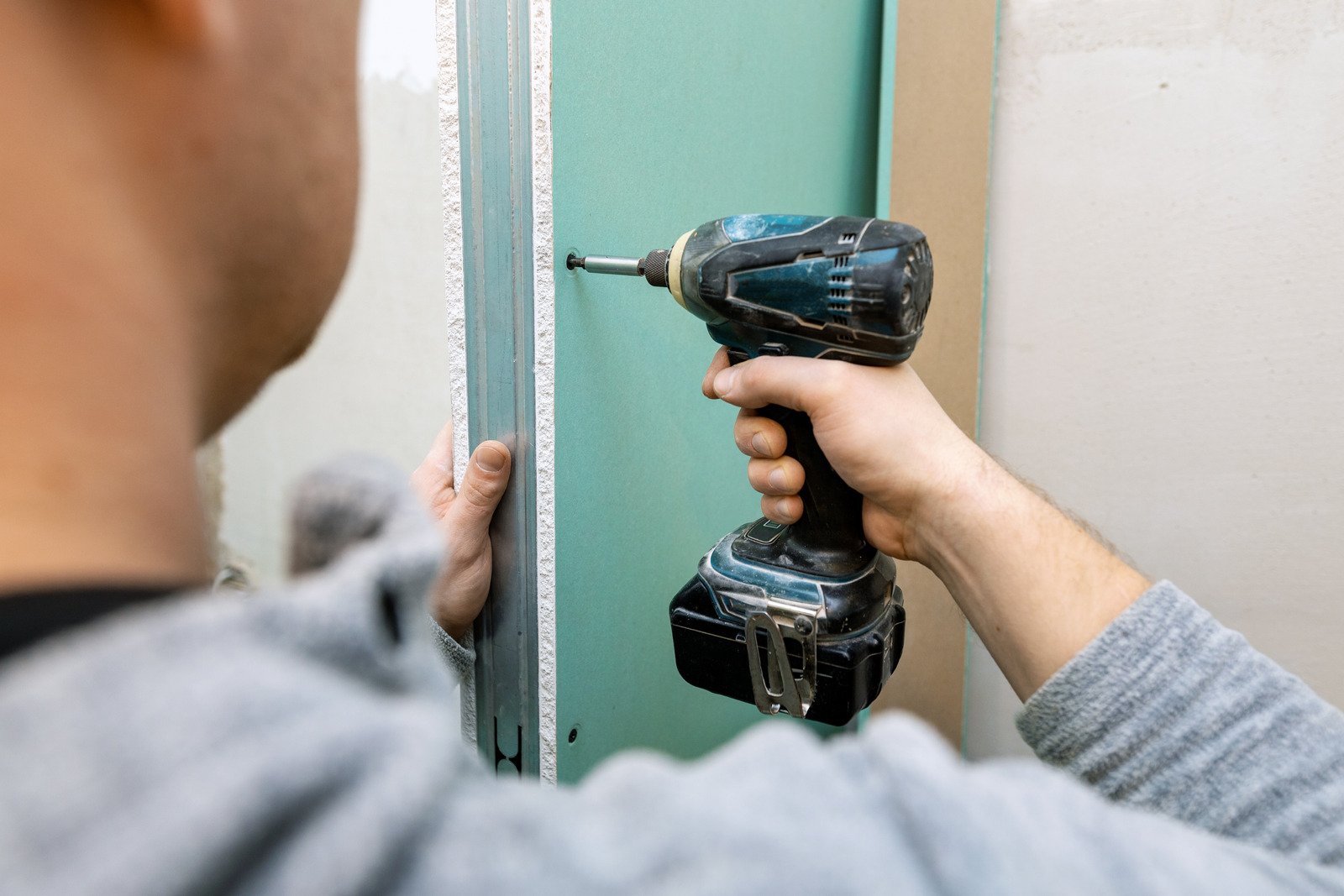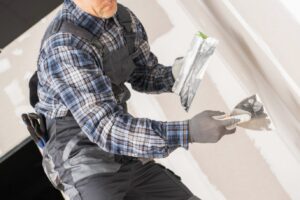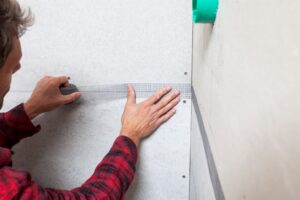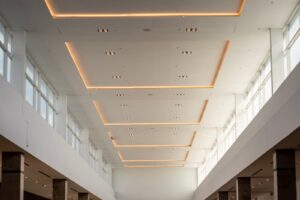When you live in Vancouver’s humid climate, choosing mold-resistant drywall is crucial for protecting your home. Regular drywall often struggles with moisture, which can lead to mold growth and pose health risks. By understanding the benefits of mold-resistant options and recognizing key features, you can make smarter decisions for your home. But how do you know you’re picking the right product? Let’s break down the essentials to help you safeguard your living space.
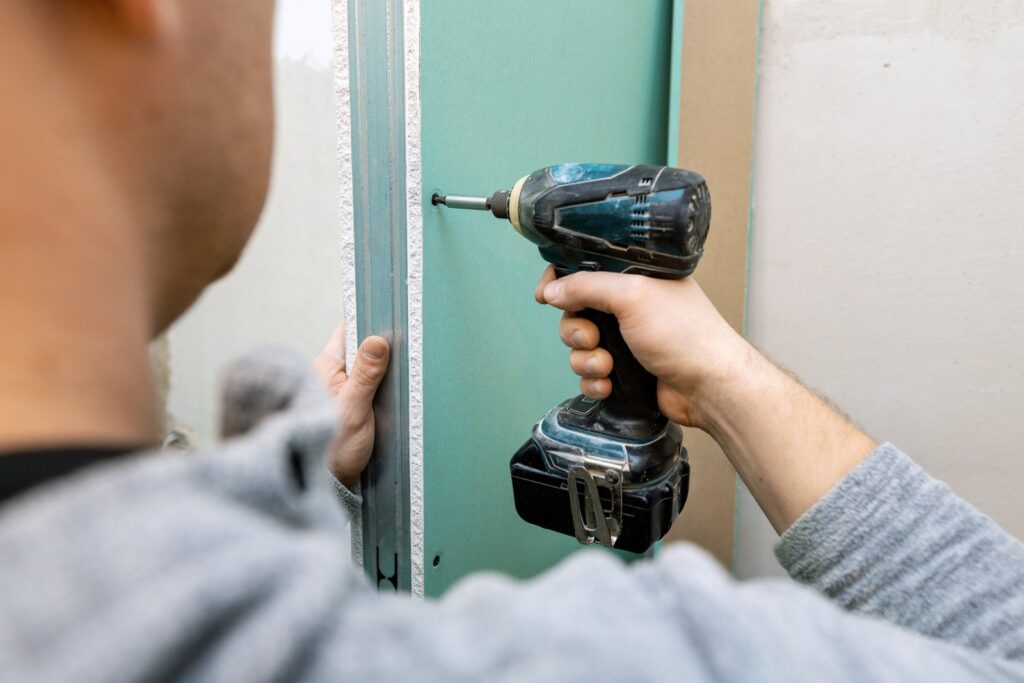
Key Takeaways
- Choose mold-resistant drywall with water-resistant cores and treated paper facings to handle Vancouver’s humidity.
- For high-moisture areas like bathrooms and kitchens, consider cement board or fiberglass-reinforced panels.
- Reputable brands like Georgia-Pacific’s DensArmor Plus and CertainTeed’s M2Tech offer strong mold protection and durability.
- Ensure proper installation: fix moisture issues, use corrosion-resistant screws, and seal joints with fiberglass mesh tape.
- Maintain your drywall by controlling humidity and inspecting regularly for mold to ensure long-lasting protection.
Understanding Mold-Resistant Drywall
If you’re building or renovating in moisture-prone areas, it’s important to understand what makes mold-resistant drywall different. This type of drywall is built with materials that help stop mold from growing, making it a good choice for Vancouver’s damp conditions.
It usually has a water-resistant core and paper facings treated to resist moisture. In especially wet areas, like bathrooms or basements, you might want to look into alternatives such as cement board or fiberglass-reinforced panels. These options offer extra protection where moisture levels are consistently high.
Benefits of Using Mold-Resistant Drywall
Mold-resistant drywall adds durability to your home and helps protect your family’s health. It includes additives that prevent mold growth, which is especially helpful in humid areas like Vancouver.
This type of drywall helps keep your walls strong over time and improves indoor air quality by reducing mold spores. Fewer mold spores mean fewer allergens and breathing problems. Overall, it’s a smart investment that promotes a healthier home and long-term comfort.
Comparison: Mold-Resistant vs. Traditional Drywall
Traditional drywall and mold-resistant drywall may look the same, but they perform very differently in damp areas.
Regular drywall has a paper face that mold loves to grow on when it gets wet. Mold-resistant drywall uses moisture-resistant cores and synthetic facings, which makes it much better at stopping mold.
While traditional drywall might cost less up front, it can lead to expensive repairs if mold starts growing. Mold-resistant drywall is a safer choice for humid climates like Vancouver.
Key Features to Look for in Mold-Resistant Drywall
When choosing mold-resistant drywall, pay attention to these two important features:
Water Resistance Properties
Drywall built for moisture control can handle Vancouver’s humidity. These products usually have a core that resists water and a barrier to stop moisture from soaking in. This reduces the chance of mold growing and helps prevent sagging or warping.
Antimicrobial Coating Benefits
Many mold-resistant drywall types have antimicrobial coatings. These stop mold and mildew from growing on the surface. This helps improve indoor air and makes the drywall easier to keep clean. Look for products with strong antimicrobial protection to get the best results.
Installation Tips for Mold-Resistant Drywall
Installing mold-resistant drywall correctly is just as important as choosing the right type. Here’s how to do it right:
Preparing the Installation Area
Make sure the area is dry and free from any leaks. Fix plumbing or roof issues before you start. Good ventilation also helps keep humidity under control.
Clear out the workspace so it’s safe and easy to move around. Keep your tools and materials nearby for better efficiency.
Proper Fastening Techniques
Use screws that won’t rust in moisture. Keep screw spacing consistent—16 inches apart on edges, 24 inches in the middle. Don’t drive screws in too deep, or you could damage the drywall and let moisture in.
Make sure screws go into the framing to keep the drywall secure. These steps help prevent sagging and support the drywall’s mold-resistant features.
Sealing Joints Effectively
Use fiberglass mesh tape for sealing joints—it’s strong and resists moisture. Cover it with joint compound, spreading it evenly with no bubbles or gaps. Feather the edges for a smooth surface.
Apply a second and third coat once each layer dries. Sand lightly for a clean finish. These steps will help your drywall stay strong and mold-resistant.
Maintenance and Care for Mold-Resistant Drywall
Even though it resists mold, this type of drywall still needs proper care. Regular checks help it stay effective over time.
Inspect your drywall for cracks or damage where moisture can get in. Keep indoor humidity low using exhaust fans or dehumidifiers in damp areas.
Clean up spills right away and wipe surfaces with a mild cleaner every so often. If you ever see mold, clean it quickly with water and vinegar to stop it from spreading.
Recommended Brands and Products for Vancouver Homes
Some drywall brands are known for excellent mold resistance. Georgia-Pacific’s DensArmor Plus handles moisture well and is perfect for humid climates. CertainTeed’s M2Tech is also a strong choice and known for its long-lasting protection.
If you’re looking for value, DensArmor Plus might save you money while still delivering great performance. USG’s Sheetrock Brand Mold Tough is another solid pick with excellent moisture defense.
Compare these products based on your needs to find the right fit for your home.
Frequently Asked Questions
How Does Mold-Resistant Drywall Compare in Cost to Traditional Drywall? Mold-resistant drywall usually costs more, but it can save you money on repairs and mold treatment later.
Can Mold-Resistant Drywall Be Painted or Finished Like Regular Drywall? Yes, just use the right primer so the paint sticks well and the surface looks smooth.
Is Mold-Resistant Drywall Suitable for Exterior Applications? No, it’s meant for indoor use only. For outdoor projects, choose materials made for exterior conditions.
How Long Does Mold-Resistant Drywall Last in Humid Conditions? It can last many years if maintained well. Regular checks and proper care help prevent mold.
Are There Any Health Concerns With Mold-Resistant Drywall Materials? Some types may release VOCs (volatile organic compounds). Look for products with safety certifications to reduce health risks.
Conclusion
In Vancouver’s damp climate, choosing mold-resistant drywall is a smart way to protect your home and health. By picking the right materials and following proper installation steps, you can improve your home’s air quality and avoid mold problems. Maintain your drywall regularly to keep it working at its best. With thoughtful choices, you can enjoy a long-lasting, safe, and comfortable living space.

